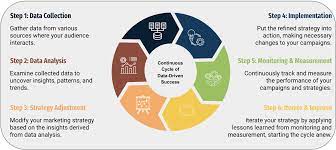Exploring Attractive Website Design Examples
When it comes to creating a successful online presence, attractive website design plays a crucial role in capturing the attention of visitors and keeping them engaged. Let’s take a look at some inspiring examples of websites that excel in design:
Apple
Apple’s website is a prime example of minimalist yet impactful design. With clean layouts, high-quality images, and intuitive navigation, Apple’s site showcases their products beautifully while maintaining a user-friendly experience.
Airbnb
Airbnb’s website stands out for its use of vibrant colors, engaging visuals, and well-organized content. The design reflects the brand’s personality and mission while providing users with an immersive browsing experience.
Nike
Nike’s website combines sleek design elements with dynamic animations to create a visually stunning platform. The use of bold typography, striking imagery, and interactive features enhances the overall user experience and reinforces the brand’s identity.
Dropbox
Dropbox’s website is known for its simple yet effective design approach. With a focus on clarity and functionality, the site features clean lines, subtle animations, and easy-to-navigate menus that make it effortless for users to explore their services.
Spotify
Spotify’s website impresses with its creative use of color schemes, engaging graphics, and seamless transitions. The design seamlessly integrates music-related visuals with user-friendly interfaces to provide an immersive browsing experience for music lovers.
In conclusion, these attractive website design examples demonstrate the power of visual appeal in creating memorable online experiences. By incorporating elements such as clean layouts, captivating imagery, intuitive navigation, and interactive features, businesses can effectively communicate their brand message and engage users on a deeper level.
8 Frequently Asked Questions About Attractive Website Design Examples
- What are some examples of attractive website designs?
- How can attractive website design impact user engagement?
- What elements make a website design visually appealing?
- Can you provide tips for creating an attractive website design?
- Which brands have standout website designs known for their attractiveness?
- What role does color play in making a website design attractive?
- How important is usability in conjunction with an attractive website design?
- Are there any common trends in modern attractive website designs?
What are some examples of attractive website designs?
When seeking examples of attractive website designs, one can look to industry leaders such as Apple, Airbnb, Nike, Dropbox, and Spotify. These companies have set the bar high with their visually appealing websites that showcase a blend of minimalist layouts, vibrant colors, striking imagery, and intuitive navigation. Each of these examples demonstrates how effective design elements can enhance user experience and convey brand identity in a compelling way. By studying these successful websites, one can gain valuable insights into the importance of aesthetics and functionality in creating an engaging online presence.
How can attractive website design impact user engagement?
Attractive website design plays a crucial role in impacting user engagement by creating a visually appealing and user-friendly interface that captures the attention of visitors. When a website is well-designed with attractive layouts, high-quality images, intuitive navigation, and engaging content, it enhances the overall user experience and encourages visitors to explore further. A visually appealing design can evoke positive emotions, build trust with users, and leave a lasting impression. By incorporating elements such as vibrant colors, captivating visuals, interactive features, and clear calls-to-action, attractive website design can effectively draw users in, keep them engaged, and ultimately drive conversions and customer loyalty.
What elements make a website design visually appealing?
When considering what makes a website design visually appealing, several key elements come into play. Firstly, a clean and organized layout can create a sense of harmony and ease of navigation for users. High-quality images and graphics that are relevant to the content can enhance visual appeal and draw in the audience. Consistent branding elements such as color schemes, typography, and imagery help reinforce brand identity and create a cohesive look. Effective use of white space can also improve readability and focus attention on important content. Lastly, interactive features, animations, and engaging visuals can add depth and interactivity to the design, making the website more dynamic and engaging for visitors. By carefully balancing these elements, a website can achieve visual appeal that captivates users and leaves a lasting impression.
Can you provide tips for creating an attractive website design?
When seeking to create an attractive website design, there are several key tips to keep in mind. Firstly, prioritize simplicity and clarity in your layout to ensure a clean and easy-to-navigate interface for users. Utilize high-quality images and engaging visuals that align with your brand identity to capture attention effectively. Consistent branding elements, such as color schemes and typography, help establish a cohesive look across your site. Pay attention to responsive design to ensure optimal viewing experiences on various devices. Lastly, incorporate user-friendly features like intuitive navigation menus and clear calls-to-action to guide visitors seamlessly through your website. By following these tips, you can elevate the visual appeal of your website and create a memorable online presence for your audience.
Which brands have standout website designs known for their attractiveness?
Many brands are recognized for their standout website designs that are celebrated for their attractiveness. Companies like Apple, Airbnb, Nike, Dropbox, and Spotify are often cited as prime examples of websites that excel in design. These brands leverage clean layouts, engaging visuals, vibrant colors, bold typography, and interactive features to create visually stunning platforms that not only showcase their products or services but also provide users with immersive and user-friendly browsing experiences. By setting high standards in website design, these brands have established themselves as industry leaders in creating memorable online experiences that captivate and engage visitors effectively.
What role does color play in making a website design attractive?
Color plays a pivotal role in making a website design attractive by influencing the overall aesthetic appeal and user experience. The choice of colors can evoke specific emotions, convey brand identity, and guide users’ attention to key elements on the site. A well-thought-out color scheme can create visual harmony, establish a cohesive look and feel, and enhance readability. By using complementary colors, contrasting hues, and strategic accents, designers can create a visually engaging website that resonates with the target audience and leaves a lasting impression. Ultimately, color has the power to evoke mood, communicate information, and shape the overall perception of a website’s design.
How important is usability in conjunction with an attractive website design?
Usability is paramount when it comes to an attractive website design. While aesthetics play a crucial role in capturing users’ attention, the user experience is equally vital in ensuring that visitors can navigate the site effortlessly and find the information they need. A well-designed website should strike a balance between visual appeal and functionality, offering intuitive navigation, clear calls to action, and responsive design elements. By prioritizing usability in conjunction with an attractive design, businesses can create a seamless and engaging online experience that keeps users coming back for more.
Are there any common trends in modern attractive website designs?
In modern attractive website designs, several common trends have emerged that contribute to a visually appealing and engaging user experience. Some of these trends include minimalist design elements, such as clean layouts and ample white space, which create a sense of simplicity and elegance. The use of bold typography and vibrant color schemes helps to draw attention to key elements on the page and establish a cohesive brand identity. Additionally, interactive features, such as animations, parallax scrolling effects, and micro-interactions, enhance user engagement and make the browsing experience more dynamic. Overall, modern attractive website designs often prioritize user-centered design principles, seamless navigation, and mobile responsiveness to ensure a compelling and intuitive interface for visitors.




